10 Best & Worst Canned Chilis, According to Dietitians
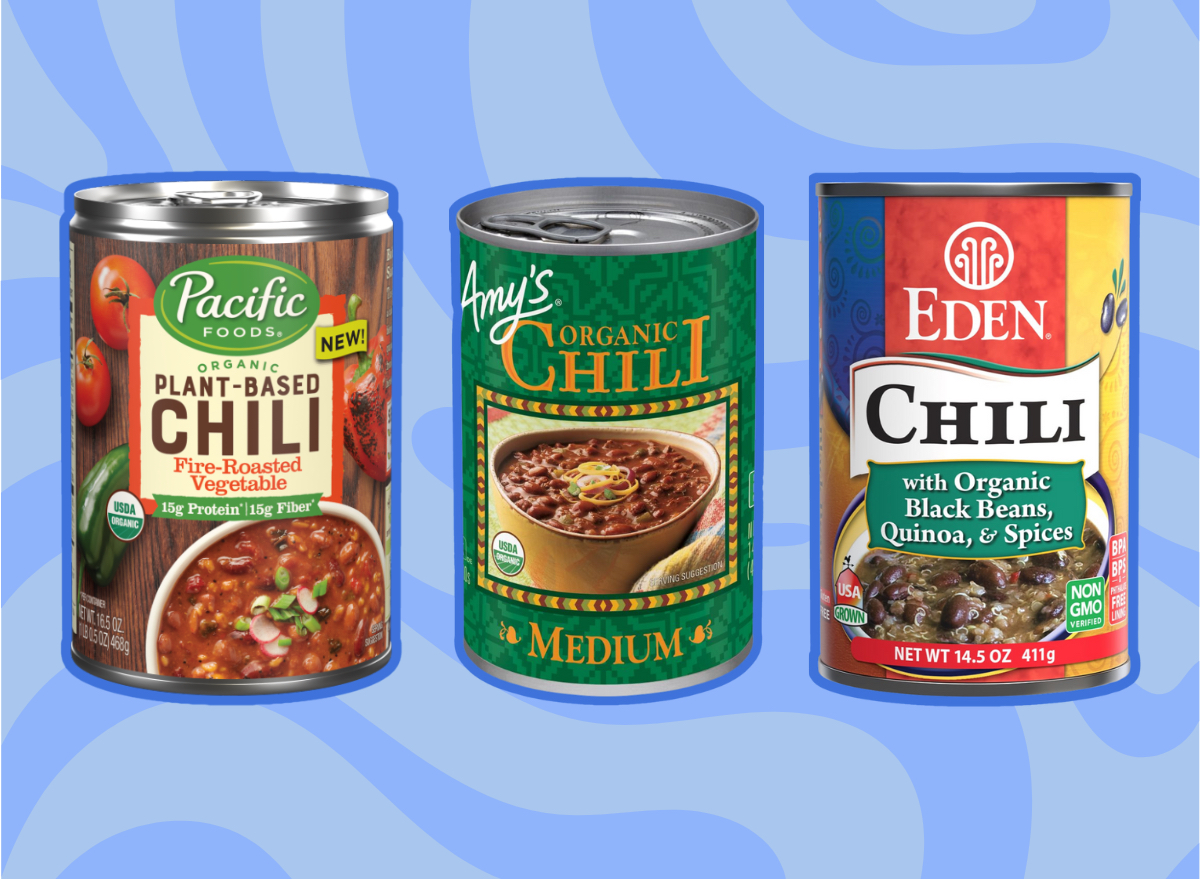
Whether you're firmly on team "beans-in-your-chili" or prefer to stick with just meat and veggies, chili stands as a go-to one-pot meal. While whipping up a homemade batch of chili might be a beloved pastime or tied to certain festivities, it's also undeniably time-consuming. Between chopping veggies, sautéing, browning meat, and letting the chili simmer for hours, it can easily become more of an endeavor than you bargained for. That's where canned chili swoops in to save the day.
Sure, some traditionalists might argue in favor of canned soup over chili, but there's something about a warm bowl of hearty chili on a chilly day that's hard to resist, even if it's from a can. Chili brings together veggies, protein, quality carbs, and fiber, and pairs effortlessly with nutritious toppings like avocado. However, not all canned chilis are created equal. While the convenience of a canned meal is appealing, it's worth taking a moment to glance over the nutrition facts and ingredients of your favorite varieties before tossing them in your cart.
How we chose the healthiest canned chilis
To help you navigate all of the available options on the shelves, keep these tips in mind on your next shopping trip.
- Fiber: This essential nutrient helps make a meal more filling and may be able to improve certain health conditions, too. All meals should include fiber, and that holds true for canned chili. Beans will provide a big boost to the fiber content of your chili, but the presence of veggies helps, too. Look for at least 3 grams of fiber per serving of canned chili, and options with a higher content are even better.
- Protein: Especially if this chili is going to make up the majority of your meal, it should have adequate protein. This nutrient also improves satiety, but it is more known for its important functions in the body, like aiding in muscle repair and growth. Whether the protein is from beef or a vegetarian source, look for options with at least 10 grams of protein per serving.
- Sodium: Canned foods are notorious for packing loads of salt. It can be difficult to find canned soups and chilis with reasonable amounts of sodium, but this quality helps separate the best from worst chili options. Sodium is an essential nutrient, but too much may negatively impact blood pressure. Choose chili options that have 700 milligrams of sodium or less per serving to keep your total sodium for the meal in a reasonable range.
Now, onto the options! Here are the 10 best and worst canned chilis on grocery shelves.
The 5 Healthiest Canned Chilis
Best: Amy's Organic Medium Chili
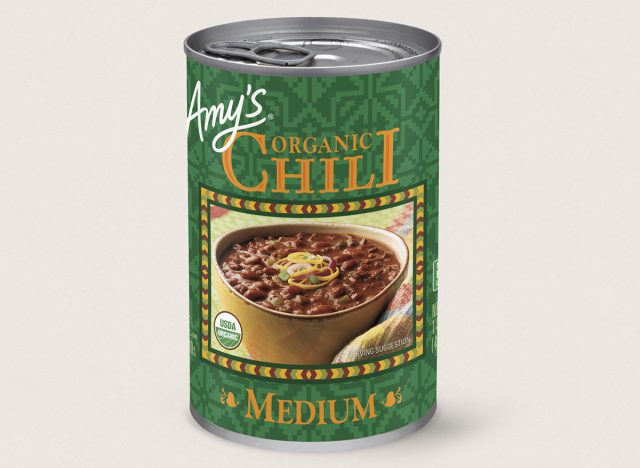
Whether or not you follow a plant-based diet, this Amy's chili is a nutritious option that meets our nutrition marks. Although this variety is slightly higher in sodium than we like to see, it is packed with protein and fiber, contains no added sugar, and has a familiar ingredient list without questionable components. One can delivers 26 grams of protein and a whopping 13 grams of fiber. Whether you have one cup or a full can, you've got a balanced meal packed with nutritious ingredients.
Best: Eden Black Bean and Quinoa Chili
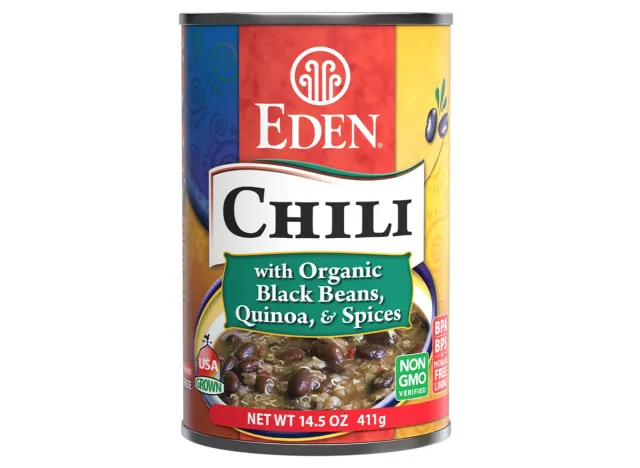
You may not see many chili options that contain quinoa, but this nutritious ingredient is a source of fiber and plant-based protein. Another vegetarian option, this chili is loaded with veggies, including mushrooms, and packs an impressive fiber and protein punch. Additionally, it is a lower-calorie option with a low fat content, allowing you to incorporate your favorite toppings to create a balanced meal. Top your chili with avocado or shredded cheese for a boost of fat, or a dollop of plain Greek yogurt for a little extra protein.
Best: Plantstrong Engine 2 Firehouse Chili
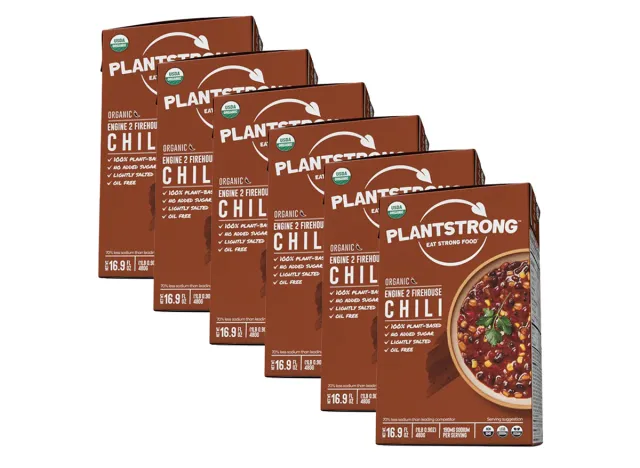
At only 190 mg of sodium per cup, this may be one of the lowest sodium chilis or soups on the market. Not to mention, it still packs plenty of flavor from the extensive herbs and seasoning list. Even though it is plant-based, you'll still get plenty of protein from this boxed chili. The low-fat content means you can add your favorite source of healthy fat to the meal while still staying within your calorie budget.
Best: Pacific Foods Plant-Based Fire Roasted Vegetable Chili
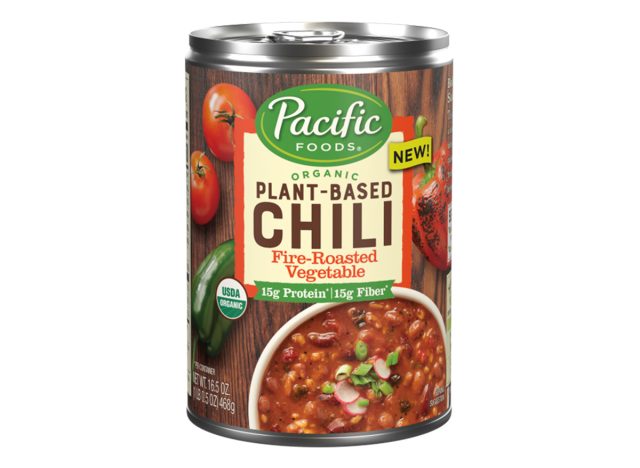
The common theme amongst the best list is plant-based. This is because the vegetarian ingredients pack loads of fiber and still meet our minimum protein recommendations. Although this option falls a little short at 8 grams of fiber per cup, eating a full can will fill you up with 15 grams and only 360 calories. Top with non-fat plain Greek yogurt to boost your protein by over 20 grams, making for a filling meal.
Best: The Good Bean Low-Carb Classic Chili
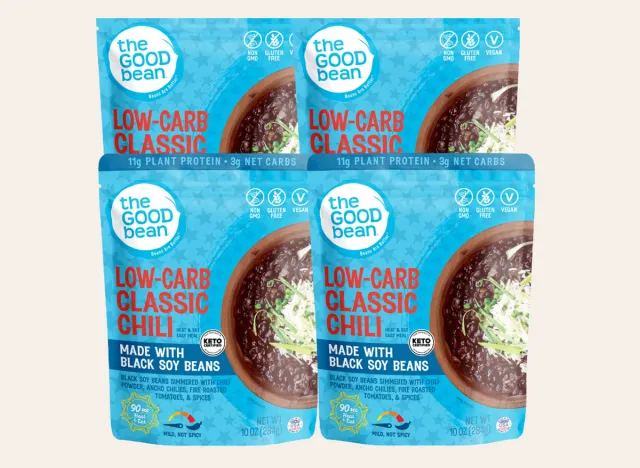
For those who don't love beans in their chili, this option is for you! Made with a base of soybeans, you'll still get plenty of fiber and protein without the carbs associated with starchy beans. A single pouch makes for a well-balanced meal, meeting our nutrition recs and staying at a reasonable 330 calories. This option is also vegan, non-GMO, and gluten-free, making it suitable for a wide range of people.
The 5 Unhealthiest Canned Chilis
Worst: HORMEL Chili No Beans
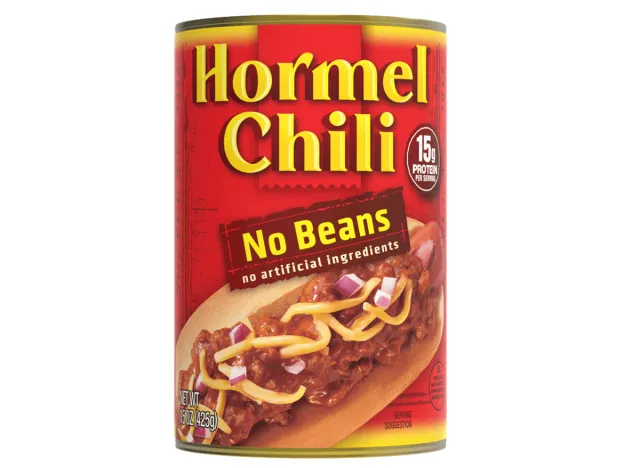
Although this option packs plenty of protein per serving, it has a much higher sodium and saturated fat content than the options on the "best" list. While this can be part of an overall healthy diet, as a stand-alone option, it should not be a staple of your diet. A full can of this chili puts you close to your sodium need for an entire day packed into one meal. The chili with beans is slightly healthier as a has a higher fiber content, but still packs the same concerning amount of sodium.
Worst: Wolf Angus Chili- No Beans
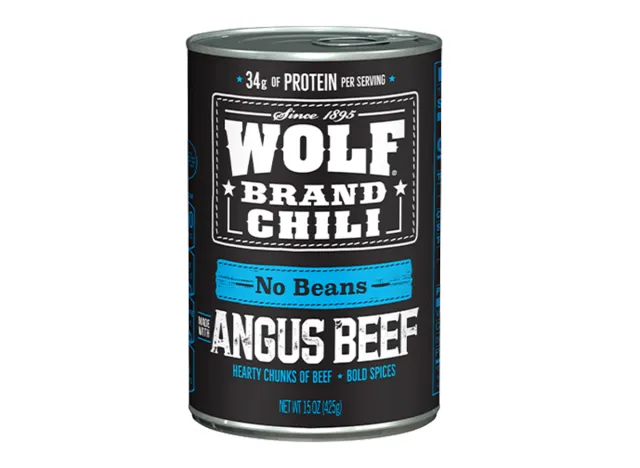
At 31 grams of fat per cup, a full can of this chili brings you to a whopping 55 grams. This is more fat than some people need to eat in an entire day, not to mention nearly half of its fat content comes from saturated sources. The canned chilis with beef and pork as main ingredients are going to provide more saturated fat than plant-based chilis, which is another factor to keep in mind when choosing which to buy. Questionable ingredients, like caramel color, also make this option less desirable.
Worst: Skyline Original Chili
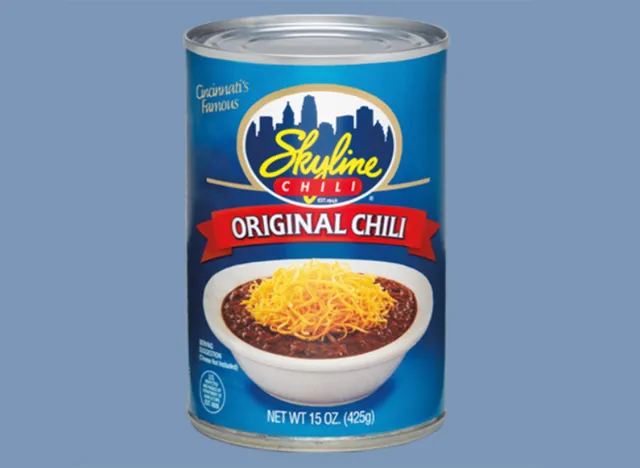
Although this option is by far the lowest-carb chili on our list, this lack of carbs also comes along with minimal fiber. At only 2 grams of fiber per can, this option doesn't make for a balanced meal. Additionally, at over 2,000 milligrams of sodium per can, you'll be nearing your daily sodium need for the day in just one meal. The ingredient list is simple, but this option leaves much to be desired in terms of nutrition. If you love this classic, stick with a one-cup serving and mix in some no-salt-added beans to the chili to make for a healthier meal.
Worst: True Primal Beef Chili
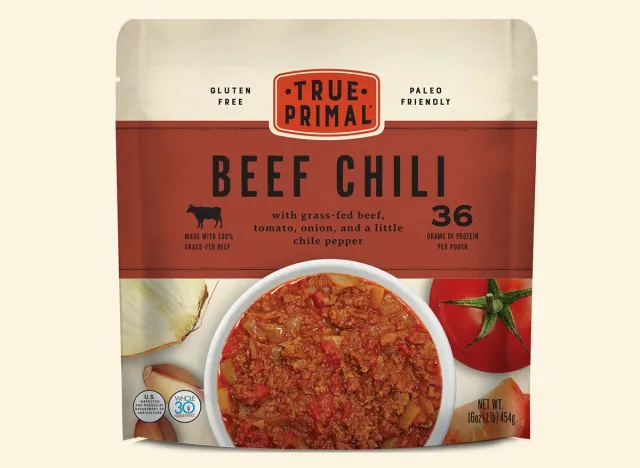
This option may be marketed as a healthy option that meets the guidelines of popular diets, like paleo and Whole30, but it leaves much to be desired. Sure, the avoidance of added sugar, and artificial colors and flavors is a positive, but the 15 grams of saturated fat and 950 milligrams of sodium are negatives for this option. More than half of the fat in the chili comes from saturated fat, a nutrient you should limit in your diet, according to the American Heart Association (AHA). Ingredient quality is important, but so are the nutrition facts.
Worst: Nalley Big Chunk Chili Con Carne No Beans
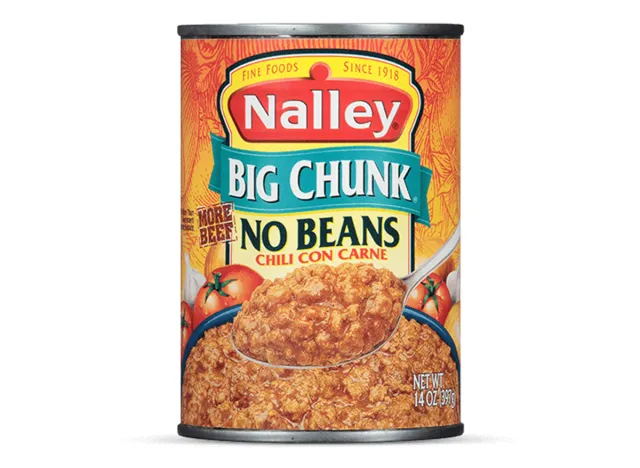
While this variety is lower in calories per serving than others on this list, it packs the highest sodium content and the second lowest fiber amount. Not to mention, this chili also contains 1 gram of trans fat per serving. The American Heart Association (AHA) recommends limiting this nutrient as much as possible due to its possible negative health outcomes. The combination of a lackluster nutrition profile along with questionable ingredients, including sugar, make this a chili to avoid.









